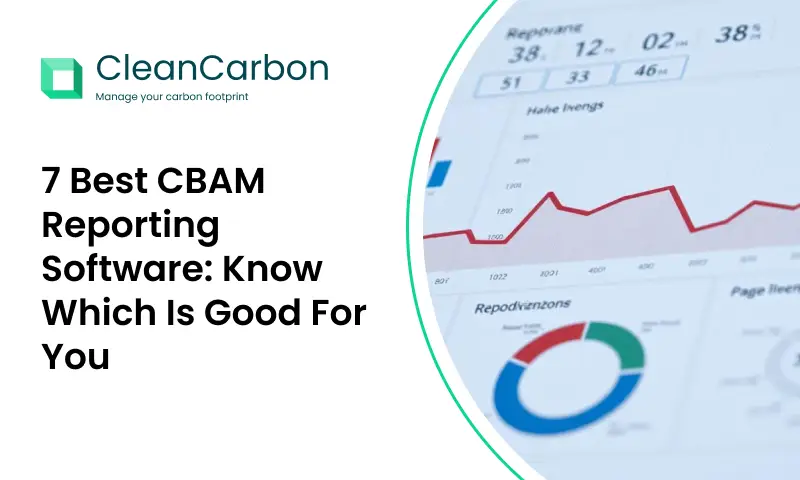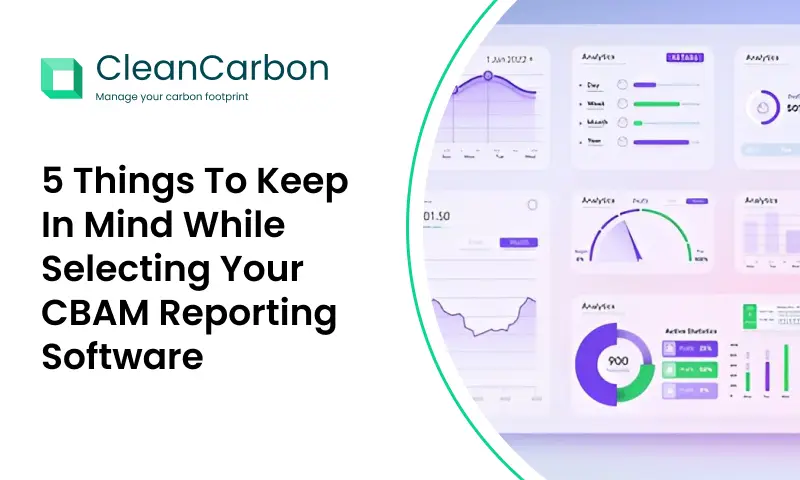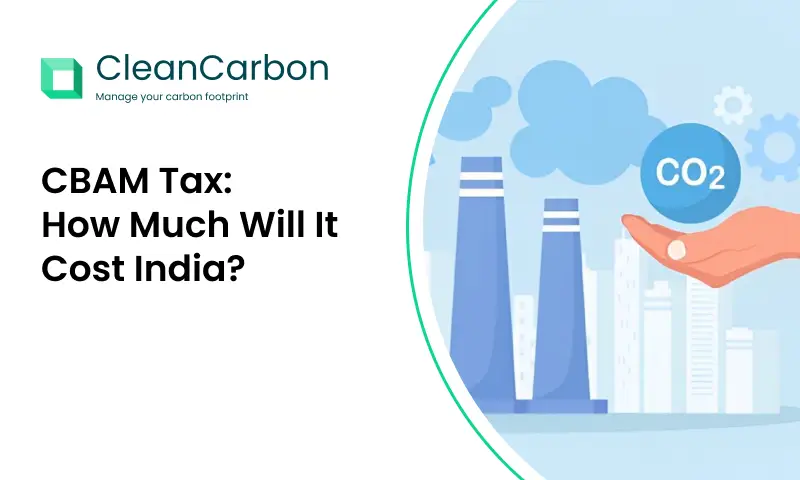The Carbon Border Adjustment Mechanism is poised to redefine global trade by embedding climate risk into business operations. Its implementation is expected to disrupt international markets—especially affecting developing economies that heavily depend on exports in carbon-intensive, CBAM-regulated sectors.
Carbon Border Adjustment Mechanism is not just a random climate policy that the global business community has to deal with when it comes to sustainability reporting. There were days when business interests, economies and trade patterns could change global economic order. In today’s age and time of rapidly advancing business goals and climate-conscious business ecosystem, corporates, consumers and investors are taking serious interest in climate risk associated with any particular business. Most of the companies are focusing on corporate sustainability aspirations and are making efforts to decarbonise their supply chains, and reduce their environmental impact.
The Carbon Border Adjustment Mechanism is rapidly emerging as a transformative force in global trade dynamics—reshaping cross-border supply chains, investment decisions, and compliance obligations for exporters to the European Union. As the EU transitions from policy framework to implementation under the Omnibus Package, the focus has shifted toward enhanced emissions transparency and embedded carbon accountability—especially for carbon-intensive sectors such as iron, steel, cement, and aluminum.
While the current regulations primarily apply to EU importers, the ripple effects are unmistakably global. For non-EU manufacturers and exporters, particularly in emerging economies like India, CBAM introduces a de facto carbon pricing regime that can influence market access, competitiveness, and cost structures.
In this blog, we examine how it is redefining the global trade environment, its implications for exporters and supply chains, and the strategic steps businesses must take to future-proof operations in a carbon-constrained economy.
How could CBAM change economic orders?

It is not so hard to guess that CBAM will disproportionately impact the developed and the developing country. Besides altering the global economic direction, the carbon pricing mechanism developed by the EU will impact the competitiveness of developing countries.
For instance, CBAM could most likely cause an annual welfare gain of US $141 billion for economically developed countries, and an annual welfare loss of US $106 billion for the economically vulnerable countries or developing countries, as per a study by the Task Force on Climate, Development and the International Monetary Fund (IMF).
Other developing countries including Ukraine, Egypt, Mozambique and Turkey could incur the economic losses of $1 billion to $5 billion. A comprehensive study by the Foundation for European Progressive Studies revealed that world’s largest steel producer China could end up paying $162.11 per tonne exports, $189.02 per tonne for India, $189.87 per tonne for Russia, $67.09 for Turkey and the 73.97 per tonne for the US after the CBAM is implemented in full-fledged manner. Reports also suggest that India, Georgia and Ukraine could most likely suffer the cost increase of greater than 10 per cent in comparison to manufactures in the European Union.
Although it is applicable only for 6 sectors now such as cement, iron and steel, aluminium, electricity, fertilisers and hydrogen, the economic impacts that it could leave on the businesses are of massive scale. The entire carbon pricing mechanism, which is a replica of the European Union Emissions Trading System (EU ETS), was introduced to prevent carbon leakage and facilitated fair trade practices. These impacts are only set to increase further as CBAM is going to cover all the sectors, industries and services under the EU ETS gradually in the future.
Factors Deciding CBAM Impact
Sector-wise impact of CBAM will be seen in the iron and steel industry, which is one of the most carbon-intensive sectors. Primary reasons causing economic ripples for businesses include the emissions intensity of the CBAM product, scale and amount of CBAM goods exported to the EU, and the kind of dependency on the EU market to sell the Carbon indensive goods from outside the commission.
Another critical factor is the absence of already existing infrastructure and credible systems in place for carbon accounting for countries like India, Brazil, Vietnam, and Zimbabwe.For instance, Zimbabwe depends on the EU for the purchase of 92 per cent of its iron and steel products, and India—second largest steel producer—has one the highest carbon-intensive industries.
Moreover, India was also ranked the 4th most exposed country to CBAM risk due its increased trade volume with the EU in 2023, as per the Centre for European Reform. Notably, Iron and Steel represented 78 per cent of India’s CBAM exports to the European Union in the year 2023.
CBAM Shifts Global Trade Dynamics
Even after some big relief for EU importers following the release of Omnibus Package, suppliers across the world face the CBAM reporting challenges. Currently, only big EU importers with the import volume of products crossing the 50 tonnes of emissions annually will be obligated to follow CBAM rules. This means relief for about 90% of the importers in the SMEs sectors with less annual trade value than this. They could also enjoy some relief as the purchase of CBAM certificates will become mandatory only from 2027. Let’s take a look at specific trade challenges and trade implications:
1. Change in Trade Patterns
The Carbon Border Adjustment Mechanism is placing significant pressure on global suppliers—especially those in developing economies—to align with EU carbon standards. Exporters lacking robust emissions accounting systems may begin redirecting their higher-carbon products to markets outside the EU that do not enforce CBAM-like mechanisms. For example, a steel manufacturer in India may strategically pivot exports toward non-EU markets to avoid CBAM-related carbon taxation and added compliance costs.
2. Supply Chain Restructuring
CBAM is catalyzing a two-tiered restructuring of global supply chains:
- Internal Reshuffling within the EU: EU importers (declarants) are likely to prioritise intra-EU suppliers with cleaner production methods to reduce the complexity and cost associated with compliance.
- External Reshuffling in Exporting Nations: Suppliers in carbon-intensive sectors will likely reorient trade flows to markets with less stringent carbon pricing regimes. This shift is driven by the financial and administrative burdens of CBAM compliance. For instance, non-EU buyers may see an uptick in supply from regions like Asia or Africa as exporters seek alternatives to the EU market.
3. Increased Product Pricing
CBAM reporting requirements will directly impact the landed cost of goods entering the EU. The imposition of a carbon border tax will inflate prices, and suppliers will need to factor in their own compliance costs. For example, a steel exporter may offer the same product at significantly different prices depending on whether the customer is in the EU or elsewhere, to account for carbon-related costs.
4. Preference for Low-Carbon Products
EU importers are expected to favour suppliers with lower embedded emissions to minimise their CBAM liabilities. This shift will create a competitive advantage for companies operating in jurisdictions with strong decarbonisation policies and carbon-efficient production systems. Countries that incentivise green manufacturing and emissions reductions will gain preferential access to EU markets.
5. Emergence of Domestic Carbon Markets
To align with evolving EU regulations and maintain export competitiveness, several countries—including the UK and India—are exploring domestic carbon markets and considering their own CBAM-like policies. This internal carbon pricing would help mitigate exposure to CBAM risks.
6. Risk of Trade Conflicts
The global expansion of CBAM could intensify trade frictions. Developing nations with significant CBAM exposure—such as India, China, and South Africa—have voiced strong opposition, labelling the mechanism a unilateral and potentially discriminatory trade measure. Retaliatory tariffs and regulatory countermeasures may emerge in response.
Conclusion
CBAM certainly poses great challenges for businesses that have conventionally been more carbon-intensive and have had heavy reliance on the EU for doing business. As the world becomes more climate-conscious, it is important for any type of business to become carbon-neutral to maintain a competitive edge. For instance, other countries such as the UK and India are also planning to have their own CBAM-like carbon pricing mechanism.
Amid such a rapidly changing sustainability reporting landscape, companies must focus on accurate data collection and maintaining a credible emissions data-base to be able to comply with any climate-policies and compliances. The key to a successful CBAM reporting lies in starting early in order to maintain a competitive edge.






